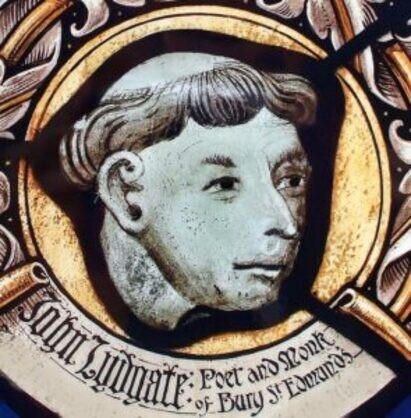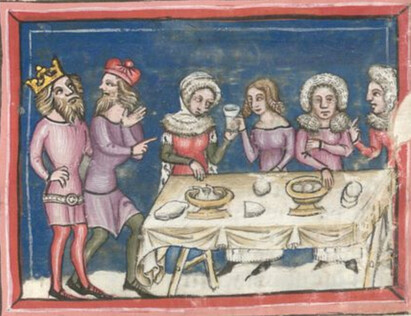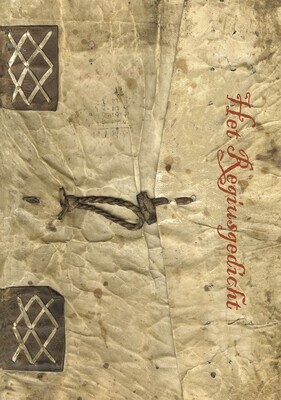After my initiation in 2018, I immediately decided to gain deeper insight into the Brotherhood. So what better first step than studying the oldest official document about the history of Freemasonry? To my delight, it turned out to be a medieval text: the Halliwell Manuscript a.k.a. The Regius Poem. As an ardent lover of poetry my journey into the origins of the craft could not have had a better start.
Although I had had a fair share of medieval English at University back in the 1980s, I was slightly disappointed to find my knowledge of middle English rather rusty. So I googled for a translation in modern English. To my utter surprise, though, I could not find one! Yes, there were prose translations, as well as a ‘modernised’ version by Brother Roderick H. Baxter, which was published in 1914. His mix of middle and modern English offered some help to understand the text, but it was definitely not aimed at literary appreciation. In short: for more than a century nobody had ever created a translation in modern English that paid respect to the beauty of the original.
Thus I wondered if I would be able to do what I once did for a series of poems by one of my literary heroes, Philip Larkin. I had thoroughly enjoyed translating his poetry in 2003 and was then pleased to learn that a Dutch publisher appreciated my labour and was willing to take the risk. My old confidence resurfaced and I decided to accept the challenge of translating the Regius Poem. Translation, after all, is the best form of close reading.

Day after day, I managed to do approximately four to six lines during the first two hours of early mornings. And after roughly two-hundred days, I finished the job. In Dutch. I was now more than familiar with the contents of the Regius Poem. Mission completed? No - I decided to share my masonic labour by contacting Fama, the Dutch equivalent of Lewis Masonic. Fama’s editors were convinced that my translation would be welcomed by Dutch Brothers and in 2022 the Regius Poem rolled of its presses - in rhymed modern Dutch.
It was then that I learned that many Dutch Brothers, even those who had been initiated decades ago, appeared to have little to no knowledge of the poem’s contents. Some had heard of it, and a handful had read parts of it in Dutch or English prose. This made me wonder about my English-speaking Brothers. Would this go for them too? After all, I had always been told that Dutch students of English were naturally more familiar with the syntax of middle English, when compared to their native-speaking counterparts. English students often regarded this older version of their mother tongue as a kind of foreign language.
Anyway, I decided to restore the poem’s trinity by re-erecting its pillar of beauty, as this would support its other pillars of wisdom and its strength. Reading it should be as relaxed and pleasurable as listening to the poem was in the early fifteenth century.
And what did I learn from the Regius Poem as its translator?
1. The poem is not about Freemasonry. It is a guideline for medieval stonemasons. Modern Brothers will recognize many of its rules and regulations, though.
2.It is not one of the best medieval poems, if compared to its contemporary medieval bestseller, for instance, The Canterbury Tales.
3. The poetic quality of its chapters varies. The section on how to behave in a church was done by good poet. But then it was more or less copied from the works by John Lydgate, a renowned monk in his days. Personally, I am inclined to think that Freemasonry saved the Regius Poem from oblivion. Nonetheless, you may not find it in most anthologies on middle English poetry.
4. It is a very serious poem, which is unusual as medieval poems in general tend to display at least some humour. The only thing I discovered was a pun. In my translation of the seventh point, I used an apostrophe in ‘ Fellow’s’ (line 5, below). But, if you read it aloud, an audience may interpret the seventh point differently. Pun intended by the medieval author.
The seventh point is perhaps significant
for a good long life that God may grant,
as you shall not, it openly announces,
sleep with your Master’s missus.
Nor with your Fellow’s, in no way at all
as the craft would find it intolerable.
5.The poem was meant to be performed by a spoken-word artist.
6. The poem’s history of masonry is an achronic hotchpotch of events that would impress a medieval audience, not a modern one.
7. It is a unique specimen of medieval literary art that deserves its place in the Old Charges, as it provides a sharp picture of a place and a time in history that inspired freemasonry’s modern format. (Imagine a medieval lodge with stonemasons listening to a theatrical performance about their history and their do’s and dont’s.)
8. The poem is not just about men and their do’s and dont’s within a craft. It is also very explicit about do’s and don’ts regarding the etiquette towards women. Basically, it urges stonemasons to respect them in many ways. It is therefore exemplary in urging Brothers repeatedly to see and treat them in accordance with the poem’s prescriptions for fair and decent behaviour. To Brothers, women are Sisters, no more, no less. In the following lines, the author warns the Brothers in a light-hearted way, for instance.
In a chamber, filled with female delight,
hold your tongue and just nourish your sight.

Harry G. de Vries (1961) is a freemason (initiated into Lodge L’Inséparable no. 12 at Bergen op Zoom, the Netherlands in 2018 and now a member of Lodge Van Aerssen Beyeren no. 263 at Putte). He is the author of a volume with translations of poems by Philip Larkin, which was published in 2003. In 2020 he published a collection of English poems of his own: Colourisations. In the summer of 2024, his first masonic novel 'Het Horloge van Celis' (Celis' Watch) was published (in Dutch) by GiST publishers at Delft, the Netherlands.
To get your copy of the Regius Poem please click here



COMMENTS